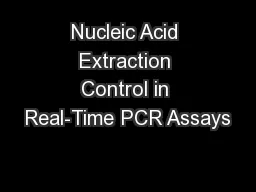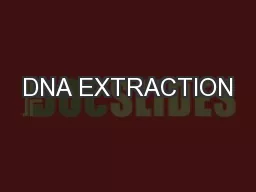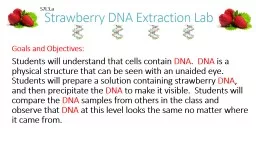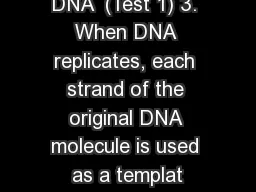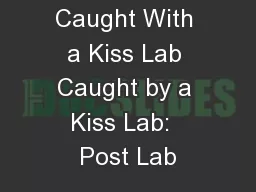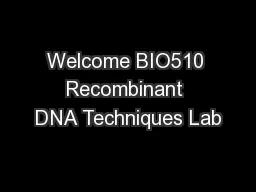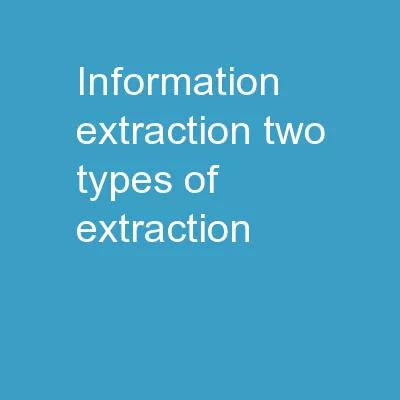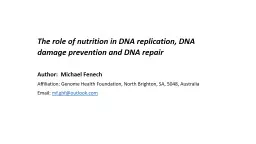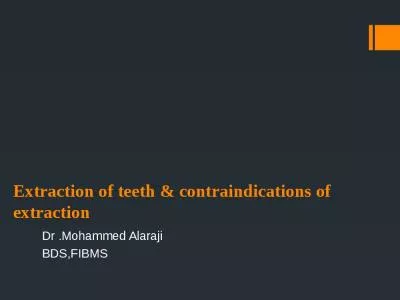PPT-Teacher Guide Lab 2: DNA Extraction
Author : morton | Published Date : 2024-02-09
Edwards Buffer Updated March 2022 Content is made available under the Creative Commons Attribution NonCommercial No Derivatives International License Contact infowolbachiaprojectorg
Presentation Embed Code
Download Presentation
Download Presentation The PPT/PDF document "Teacher Guide Lab 2: DNA Extraction" is the property of its rightful owner. Permission is granted to download and print the materials on this website for personal, non-commercial use only, and to display it on your personal computer provided you do not modify the materials and that you retain all copyright notices contained in the materials. By downloading content from our website, you accept the terms of this agreement.
Teacher Guide Lab 2: DNA Extraction: Transcript
Download Rules Of Document
"Teacher Guide Lab 2: DNA Extraction"The content belongs to its owner. You may download and print it for personal use, without modification, and keep all copyright notices. By downloading, you agree to these terms.
Related Documents


